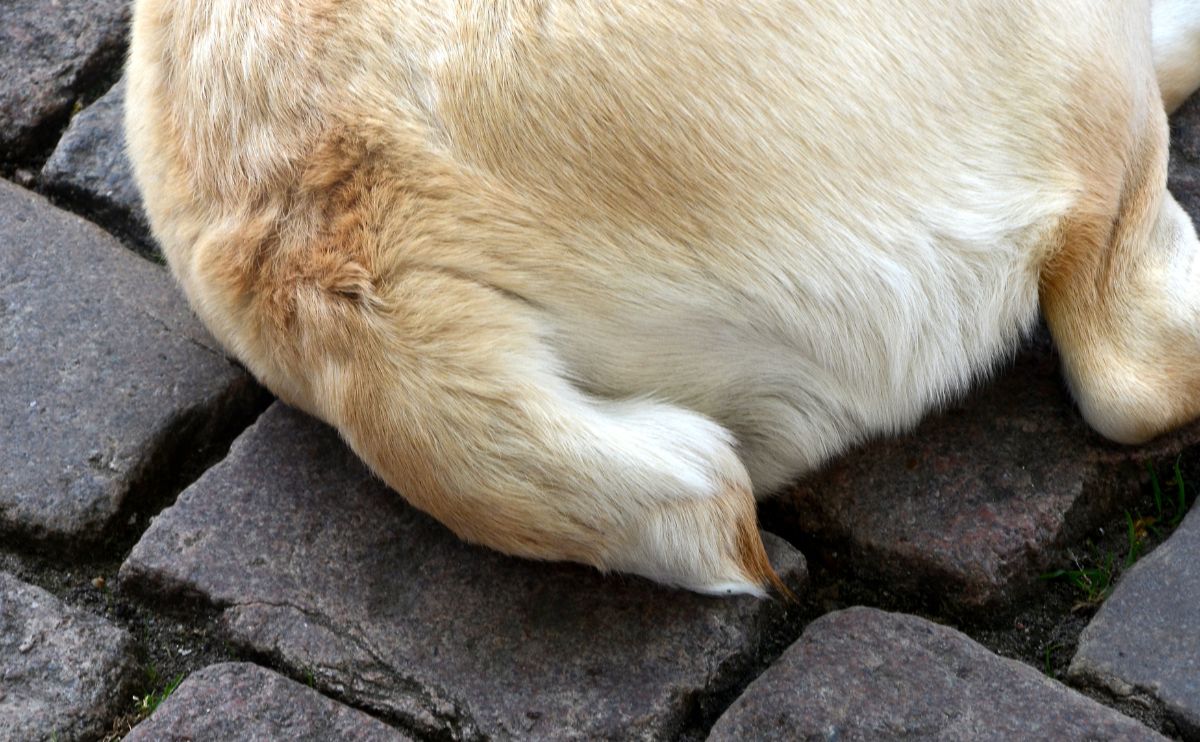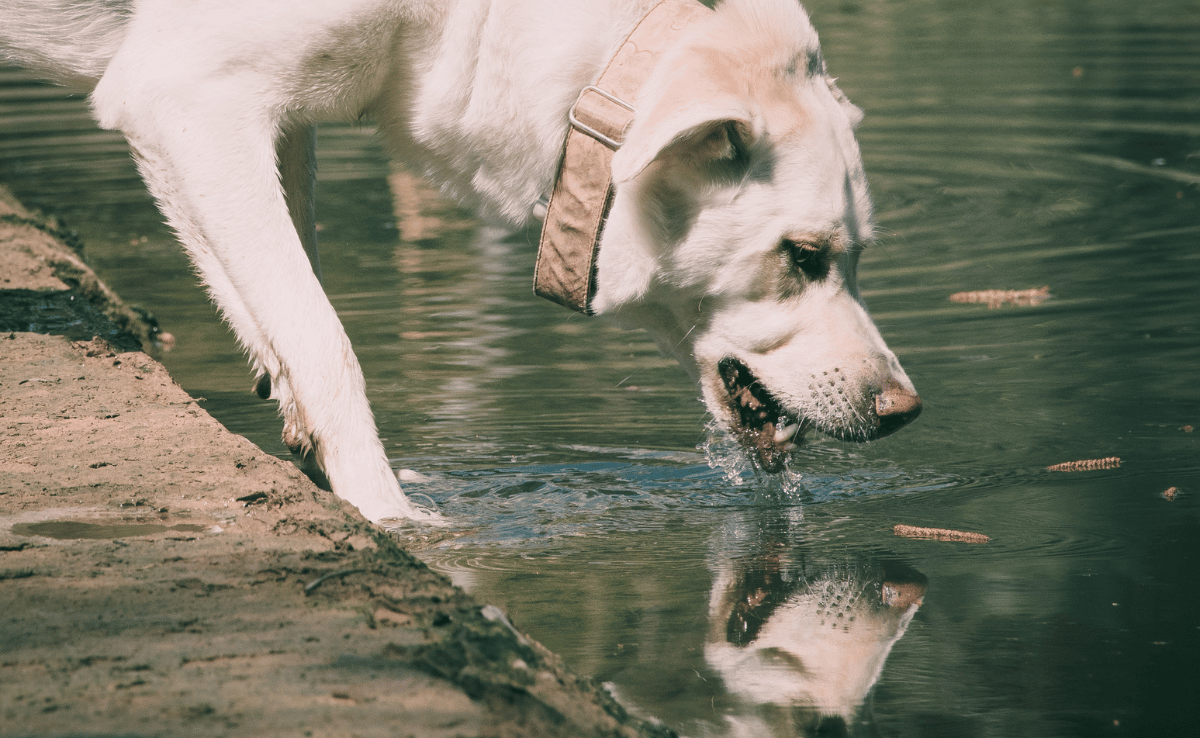Pepto Bismol: Will Shotgunning This Pink Drink Cure Your Dog’s Digestive Woes?
When you purchase through links on our site, we may earn a commission. Here’s how it works.
Your dog just emptied their stomach onto the floor. Now, you’re gripping a bottle of bubblegum-pink Pepto Bismol, wondering if you’re about to fix your dog’s stomach—or become a cautionary Reddit thread.
Table of Contents
You’ve entered a strange space: somewhere between a helpful pet parent and an unlicensed pharmacist. The internet says maybe. Your vet’s voicemail says closed. And your dog? They’re still pacing, swallowing hard, and eyeing the carpet like it’s round two.
Pepto Bismol can help with certain doggy digestive disasters—but only if you know what you’re doing.
Used wrong, it stains rugs, obscures symptoms, and adds “GI mystery” to your vet’s growing list of concerns. Used right? It might save you a weekend of floor cleanup and a four-figure bill.
So before you play doggie doctor, let’s break it down: when Pepto works, when it absolutely doesn’t, and why that cheerful pink hue is more sinister than it looks.
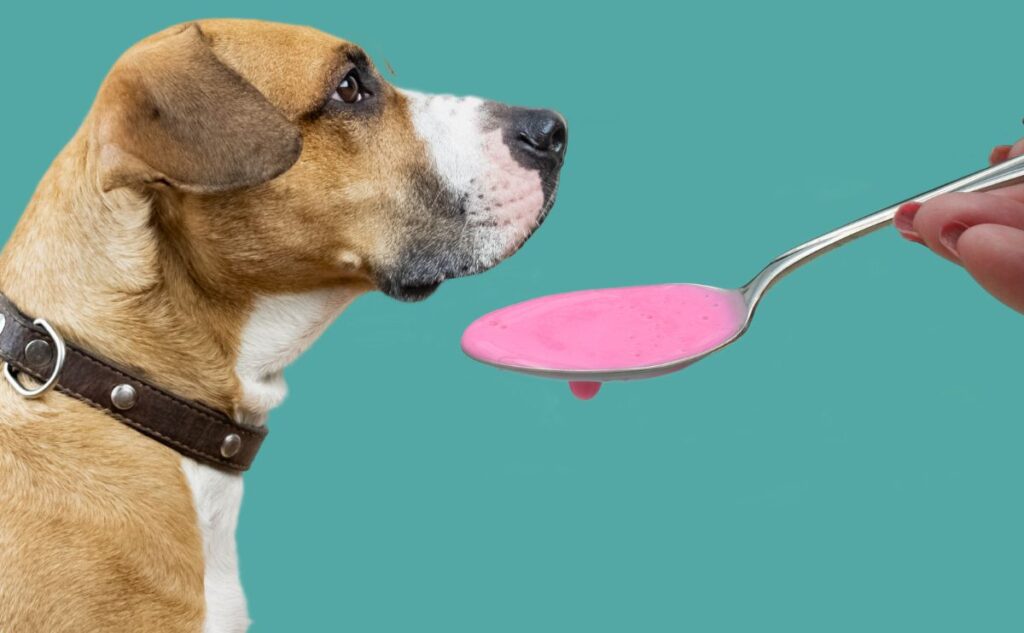
What Is Pepto Bismol, Really?
It’s bubblegum pink, weirdly chalky, and lives eternally in your medicine cabinet next to expired cough drops.
You were probably first introduced through the jingle: “Nausea, heartburn, indigestion, upset stomach… diarrhea!”
Catchy. Comforting. Weirdly upbeat about gastrointestinal distress.
But under the nostalgia, Pepto Bismol is a drug—specifically, bismuth subsalicylate, a compound in the same chemical family as aspirin.
It works in a few ways: It coats the stomach lining to reduce irritation, calms inflammation, slows down the movement of fluids into the gut, and even has mild antibacterial properties. Basically, it forms a kind of protective pink shield while helping to kill certain diarrhea-causing microbes.
In humans, that makes it a go-to for nausea, heartburn, and whatever else happens after gas station sushi.
But dogs aren’t just small humans. What helps you might seriously hurt them.
Is It Safe To Give My Dog Pepto Bismol?
Short answer: sometimes. Longer answer: only if your vet says so, and even then—proceed like you’re diffusing a bomb.
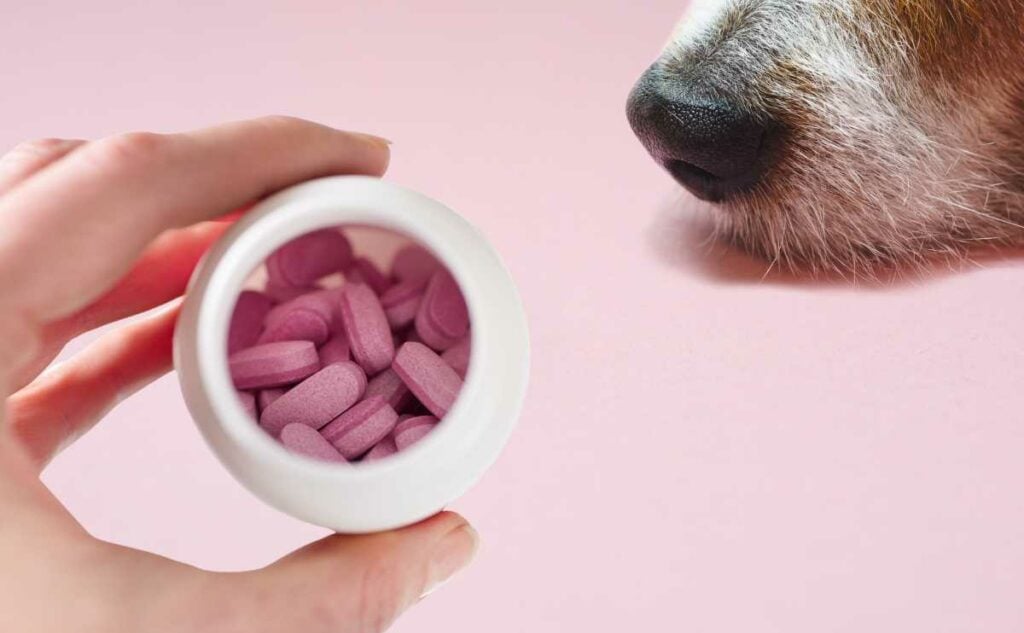
Pepto Bismol is generally considered safe in specific cases for certain dogs, in small, controlled doses, for short-term use. That’s a lot of fine print, and here’s why:
The salicylate component—the same family as aspirin—can cause stomach bleeding in dogs, especially if they’re already on NSAIDs like Rimadyl or Deramaxx. Meanwhile, the bismuth part can turn your dog’s poop dark gray or black, making it nearly impossible to tell if there’s actual blood in it—which is a problem when you’re trying to spot internal bleeding.
It can also interfere with X-rays. The bismuth in Pepto Bismol is a radiopaque, meaning it shows up on imaging as bright, metallic-looking spots. There are documented cases in both human and veterinary medicine where these have been mistaken for foreign bodies like coins or batteries, which can lead to unnecessary (and expensive) procedures.
And then there’s the dosing. Pepto Bismol isn’t made for animals—there’s no pet-safe label, no chart on the back for your 12-pound Chihuahua or your 90-pound Lab. You’re either eyeballing it or relying on secondhand internet math.
That’s a risky move for any dog, especially if they have underlying issues like liver disease, kidney trouble, or bleeding disorders. Even a “safe” dose in one dog could cause problems in another.
So yes, Pepto can be safe. But if you’re guessing, Googling, or winging it, you’re playing a dangerous game.
Pepto Bismol comes in liquid form (the iconic “pink stuff”), chewable tablets, and caplets—but skip the caplets. They’re harder to dose accurately and generally not recommended for dogs.
Warning: Never give cats Pepto Bismol or any product containing salicylates, as these are highly toxic to cats.
Can Pepto Actually Help—Or Just Delay The Inevitable?
If your dog has a mild, one-off stomach issue—like eating something slightly weird but not toxic—Pepto might ease the discomfort.
It can slow diarrhea, calm minor inflammation, and coat the stomach lining to reduce irritation. In some cases, it may even reduce vomiting. That’s why some vets cautiously recommend it for short-term use in otherwise healthy dogs with no underlying conditions.
But here’s the issue: Pepto doesn’t solve the problem. It masks it.
And if that “bad chicken nugget” moment is actually a parasite, bacterial infection, pancreatitis, or early sign of a blockage, then Pepto is just paint over rot. Your dog may feel better temporarily, but the damage keeps building underneath.
It can also cause constipation, which sounds better than diarrhea until you realize you’ve just traded one form of GI distress for another. Or worse, blocked up a dog that really, really shouldn’t be blocked.
Pepto works best when used like a fire extinguisher: quickly, correctly, and only if you’re 100% sure it’s the right tool for the problem. Anything else? You’re just stalling a vet visit and making diagnosing the situation more challenging when you finally show up.
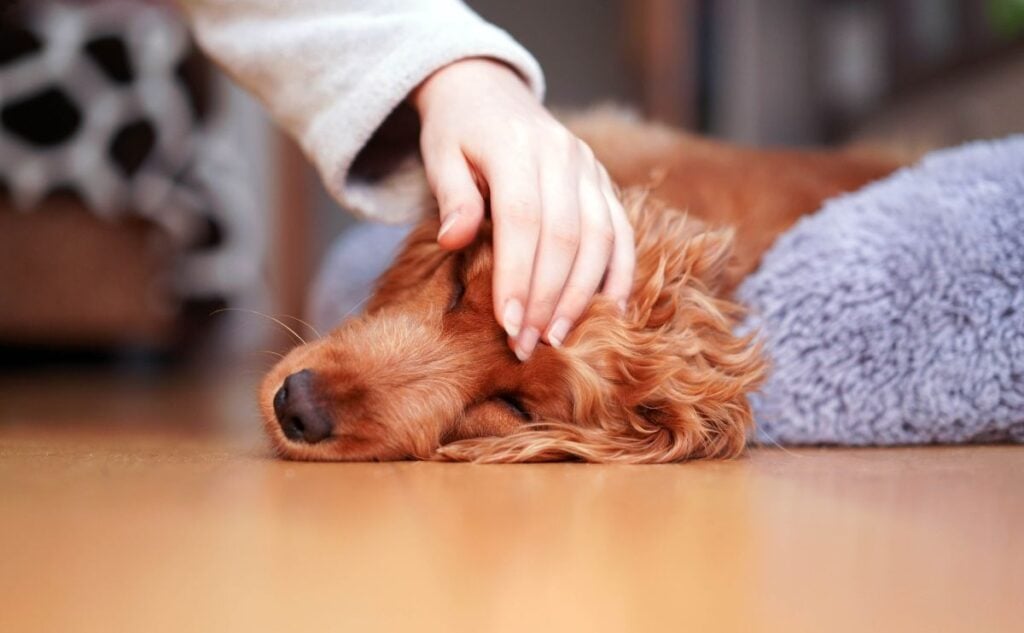
Do Not Give Pepto If…
This isn’t one of those “consult your doctor” disclaimers people ignore. These are hard no’s—dogs that absolutely should not be taking Pepto Bismol unless explicitly approved by your veterinarian:
- Dogs with bleeding disorders: Pepto can thin the blood; in these dogs, that’s a recipe for internal disaster.
- Dogs on NSAIDs or steroids: Combining salicylates with Rimadyl, Deramaxx, or prednisone? That’s Ulcer City.
- Dogs currently taking antibiotics or aspirin: The risk of interactions, GI bleeding, and other side effects jumps significantly.
- Dogs with liver or kidney disease: These organs are key in metabolizing drugs. If they’re not functioning correctly, toxicity becomes a real threat.
- Pregnant or nursing dogs: Don’t roll the dice on fetal development or medication passing through milk.
- Puppies: Their systems are too immature to safely process it. If it’s bad enough to consider meds, it’s bad enough to call your vet.
- Dogs allergic to salicylates or bismuth: Yes, that includes dogs who’ve reacted to aspirin in the past
If any of these apply to your dog, put the pink stuff down and call your vet. This is not the time for improvisation.
Pepto Bismol Dosage For Dogs
If you’ve made it this far and your vet has actually signed off on giving your dog Pepto, congratulations—you’ve unlocked the high-stakes game of canine medication math.
There are two forms commonly used: liquid and chewable tablets.
Caplets? Don’t even bother. They’re harder to break down, harder to dose, and just generally a bad idea.
Important: These dosages are for regular-strength Pepto Bismol only. Do not use “Ultra” versions—they’re twice as concentrated and unsafe for dogs at these amounts.

Liquid Pepto Dosage
- Dose: 1 teaspoon (5 mL) per 10 pounds of body weight
- Frequency: Every 6–8 hours
- Max duration: No more than 24–48 hours without vet follow-up
Example: A 30-pound dog would get 3 teaspoons (15 mL) per dose.
The best way to give your dog the liquid is to use a plastic syringe. Place the syringe toward the back of your dog’s tongue and slowly push the plunger.
Then hold their muzzle to make sure they swallow the medication. Brace yourself for the look of betrayal.
Chewable Tablet Dosage
Each chewable contains 262 mg of bismuth subsalicylate. The general dosage is 8.5 mg per pound of body weight.
| Dog Weight (lbs) | Dosage (mg) | Dosage (Tablet*) |
|---|---|---|
| 10 | 85 | 0.30 |
| 20 | 170 | 0.60 |
| 30 | 255 | 1.00 |
| 40 | 340 | 1.30 |
| 50 | 425 | 1.60 |
| 60 | 510 | 2.00 |
| 70 | 595 | 2.25 |
| 80 | 680 | 2.60 |
| 90 | 765 | 3.00 |
| 100 | 850 | 3.25 |
*Based off of a chewable tablet that is 262mg
Reminder: Black or gray stool can be a normal side effect—but it can also hide signs of internal bleeding. If your dog’s symptoms worsen or don’t improve within 24 hours, call your vet.
When Pepto Goes Wrong: Overdose & Accidental Ingestion
Maybe your dog helped themselves to a chewable tablet when you turned your back. Perhaps they knocked over the bottle and licked the floor clean.
Either way, you’re no longer in “mild GI upset” territory. You’re in call-your-vet-right-now mode.
Signs Of Pepto Bismol OverdoseI Dogs
- Vomiting (ironic, yes)
- Diarrhea that worsens or becomes bloody
- Melena (dark, tarry stool)
- Abdominal pain
- Pale gums
- Lethargy or weakness
- Difficulty breathing
- Dehydration
- Tremors, seizures, or collapse
Salicylate toxicity is real, and it doesn’t take much to reach dangerous levels—especially in small dogs or those with preexisting conditions. If your dog has ingested too much, don’t wait to “see how they do.” Call your vet or an emergency clinic immediately.
If you’re unsure how much your dog consumed, treat it as a potential overdose and err on the side of action. Bring the bottle with you—it’ll help the vet assess the situation faster.
Need Immediate Guidance?
- Pet Poison Helpline: 855-764-7661
- ASPCA Animal Poison Control Center: 888-426-4435
Alternatives To Pepto Bismol (That Won’t Terrify Your Vet)
If you’re hesitating with the pink bottle in hand, good. That means your survival instincts are intact.
There are other options—some over-the-counter, some straight from the kitchen—that vets often recommend for mild stomach issues. They’re generally safer, easier to dose, and less likely to result in a scary “So … my dog might have internal bleeding?” conversation.

Bland Diet (a.k.a. Doggie Detox)
If your dog has mild diarrhea or vomiting and still seems alert and hydrated, most vets will tell you to withhold food for 12 to 24 hours, then reintroduce bland food in small portions.
- What to serve: Boiled chicken (no skin, no seasoning) and plain white rice
- What to avoid: Fatty meats, dairy, or your guilt-fueled instinct to give them a treat “so they feel better.”
Hydration is key here—always make sure your dog has access to fresh water, especially if they’re losing fluids.
Pumpkin (The Good Kind, Not The Pie Kind)
Plain canned pumpkin (not pie filling) can help firm up loose stools or get things moving if your dog is backed up. It’s packed with fiber and easy on the gut.
- Small dogs: ½ to 1 teaspoon
- Medium dogs: 1 to 2 teaspoons
- Large dogs: 1 to 2 tablespoons
You can mix it with food or give it straight. Most dogs won’t fight you on this one—it’s weirdly delicious to them.
Safer OTC Options (with Vet Approval)
- Pepcid (famotidine): Reduces stomach acid. Used for nausea, reflux, or mild gastritis.
- Imodium (loperamide): Can slow diarrhea—but only for certain dogs, and it’s not safe for collies or herding breeds.
- Probiotics: Help restore gut balance. Choose ones specifically formulated for dogs (like Purina FortiFlora or Nutramax Proviable).
Always check with your vet before giving any human medication. Just because it’s in your cabinet doesn’t mean it belongs in their gut.
Learn more about these options in our article on which OTC meds are safe for dogs. We also share our top home remedies for diarrhea and constipation.

When To Call The Vet
If your dog’s stomach issue feels like a one-time fluke, a bland meal and rest might be enough. But if things start to escalate—or just won’t stop—you need backup.
Call your vet if your dog has:
- Vomiting or diarrhea that lasts more than 24 hours
- Blood in their stool or vomit
- Signs of dehydration (sunken eyes, dry gums, lethargy)
- Refuses food or water for more than a day
- Any underlying health conditions that could complicate things
- Ingested something questionable and you’re unsure what it was
- Got worse after you gave Pepto
And if your gut says, “This isn’t normal,” trust that. A quick call can prevent a slow, expensive, stressful spiral into something far worse.
Frequently Asked Questions
Here are some of the questions our readers ask most often about Pepto Bismol and dogs. Don’t see yours? Ask us in the comments!
How Often Can You Give A Dog Pepto Bismol?
If your vet approves it, you can give a dose every 6 to 8 hours for no more than 24 to 48 hours. If your dog isn’t showing improvement after a couple of doses, stop. It’s time to call your vet.
Can A Dog Overdose On Pepto Bismol?
Yes—and it can be serious. Too much Pepto can lead to salicylate toxicity, which affects the stomach, kidneys, and nervous system. Small dogs are especially at risk.
Signs include vomiting, diarrhea (yes, it can get worse), tremors, and even seizures. Call your vet or a poison control hotline immediately if you think your dog has had too much.
What If My Dog Ate Pepto Bismol Tablets?
Don’t panic—but don’t wait, either. Contact your vet with the details: how much they ate, what kind (regular or ultra), and your dog’s weight. The more info you have, the faster your vet can determine whether it’s serious.
Can You Use Pepto Bismol For Hot Spots On Dogs?
Nope. This is one of those internet hacks that needs to die.
There’s no evidence it helps, and your dog will likely lick it off, which brings us right back to the overdose problem. Use vet-approved topicals instead.
Learn more about treating hot spots.
Is Pepto Bismol Safe For Long-Term Use?
Definitely not. Pepto Bismol is meant for short-term relief of mild symptoms—think 24 to 48 hours max. If your dog needs ongoing GI support, your vet can recommend safer options like prescription meds, diet changes, or probiotics.
Can I Give My Dog The Ultra Or Max Strength Version?
No. The ultra versions have double the active ingredient and make dosing way riskier. Stick to regular strength only—and only with your vet’s approval.
Learn More About Dog GI Problems
Pepto Bismol might help with your dog’s stomach issues—but only in the narrowest, most specific situations.
Need help decoding the mess? We’ve broken down what your dog’s stool is really telling you in our guide to dog poop color, and if you’re dealing with mystery puddles, our vomit color guide can help you figure out what’s going on before panic sets in.
